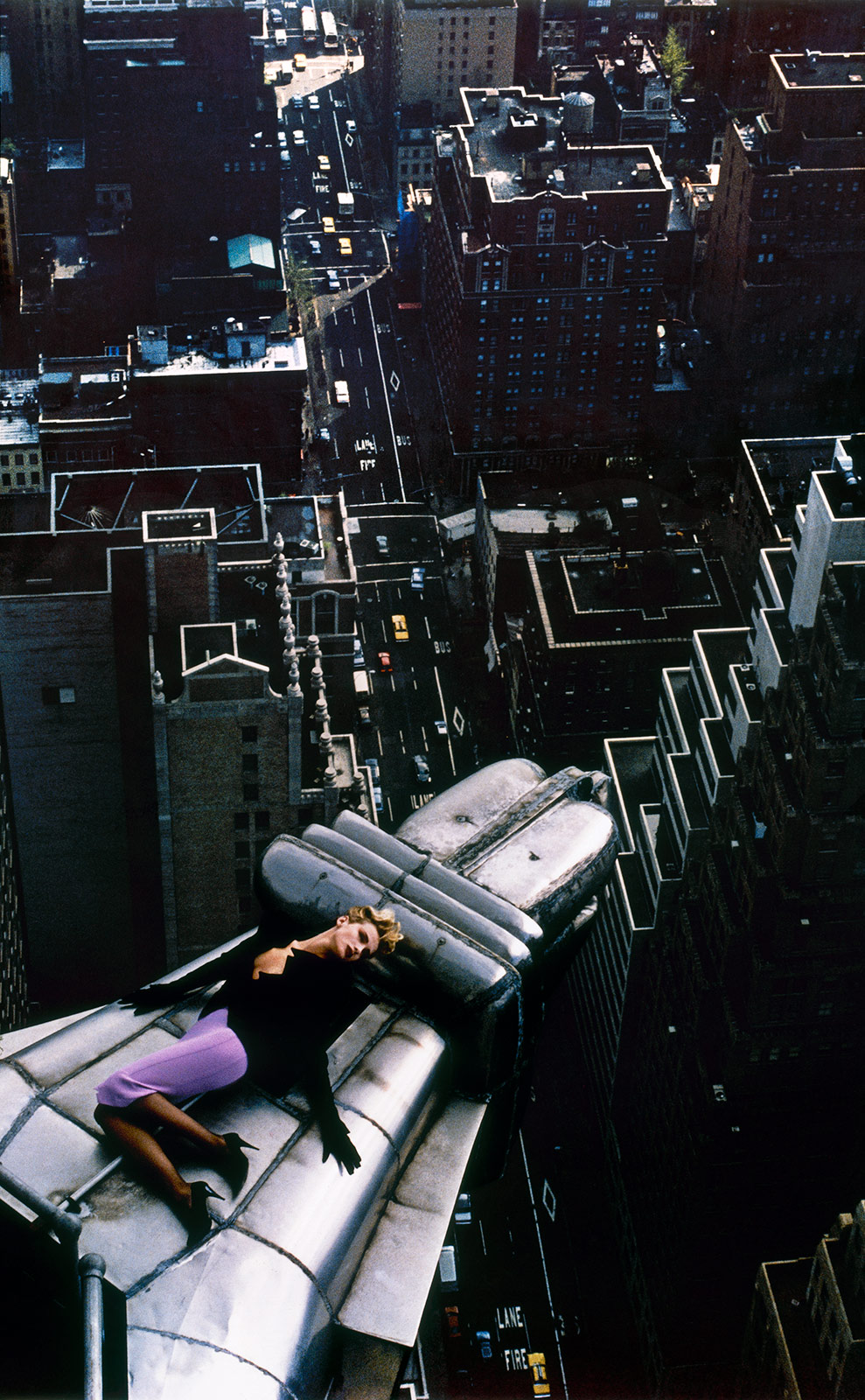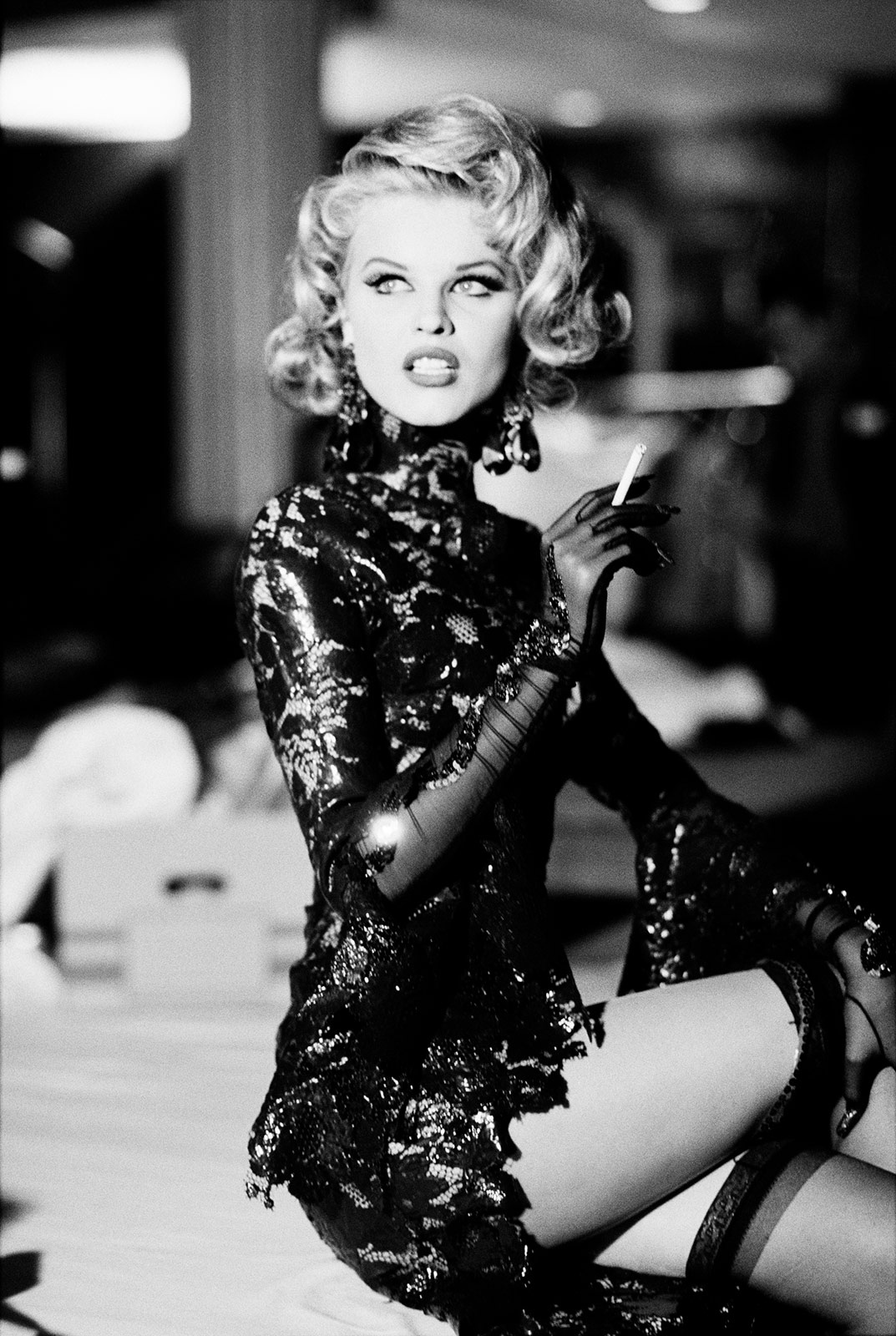The Montreal Museum of Fine Arts pays homage to the fashion designer in the exhibition ‘Thierry Mugler: Couturissime.’
In Thierry Mugler’s world, women are fierce vixens, powerful otherworldly creatures, and sleek warriors ready to conquer the universe. In reality, those same archetypes—Beyoncé, Cardi B., Kim Kardashian, and Lady Gaga, to name a few—actually wear the French designer’s pieces while performing on stage or walking the red carpet. Since the French designer started his label in the early ‘70s, his pieces have gone on to become icons in their own rite, as well as his iconic Angel perfume, a powdery-sweet concoction that seduces anyone who smells it.
Mugler empowered women upon living through the May ‘68 student protests in Paris, Women’s Liberation in the ‘70s, and the passing of the 1975 Veil Law, which gave females the right to have an abortion in France. “Witnessing this, Mugler always wanted to pay tribute to women and make them powerful, so he basically created this world of women, but without men,” said fashion curator and author Thierry-Maxime Loriot. “It was really a world without men where in fact he was giving the opportunity to women to choose to become whoever they want to be, not conform them to some garment.”
Mugler empowered women upon living through the May ‘68 student protests in Paris, Women’s Liberation in the ‘70s, and the passing of the 1975 Veil Law, which gave females the right to have an abortion in France. “Witnessing this, Mugler always wanted to pay tribute to women and make them powerful, so he basically created this world of women, but without men,” said fashion curator and author Thierry-Maxime Loriot. “It was really a world without men where in fact he was giving the opportunity to women to choose to become whoever they want to be, not conform them to some garment.”
Mugler empowered women upon living through the May ‘68 student protests in Paris, Women’s Liberation in the ‘70s, and the passing of the 1975 Veil Law, which gave females the right to have an abortion in France. “Witnessing this, Mugler always wanted to pay tribute to women and make them powerful, so he basically created this world of women, but without men,” said fashion curator and author Thierry-Maxime Loriot. “It was really a world without men where in fact he was giving the opportunity to women to choose to become whoever they want to be, not conform them to some garment.”
This spring, through September 8, Mugler’s world will take over The Montreal Museum of Fine Arts with Thierry Mugler: Couturissime. Mugler’s first museum exhibition, which showcases 140 garments made from 1973 to 2001, also features photographs by Helmut Newton, Herb Ritts, and David LaChapelle, and sketches, and archival documents. Thierry-Maxime Loriot—the exhibition’s curator, who was also behind the Jean-Paul Gaultier exhibition in 2011—said, “Mr. Mugler refused to the most important museums in the world to have any exhibition done on his work for the past 25 years, and this exhibition—it’s not a retrospective. It’s not chronological. That’s one thing he was fearing.”
So who is Thierry Mugler? Mugler was born in 1948 in Strasbourg, France. He gravitated towards the world of dance, taking ballet lessons at age 9. The designer would become exposed to theatrics at a young age, when he would dance on stage, training with the ballet corps of The National Opera of Rhine from the age of 14. Mugler would head to Paris at the age of 24, taking on freelance designing gigs before starting his namesake label in 1973 with businessman Alain Caradeuc, inaugurating the brand with a collection he named “Café de Paris.”
Loriot praised Mugler, who showed couture for the first time in 1992, for his ability to transcend beyond traditional fashion. “In the case of Thierry Mugler, it makes his work quite timeless,” said the curator. “When you look at the clothes, it is impossible to say which decade it is, because he never followed trends, but he really based his work from his own world and his imagination which something now is more rare because I think people want to fit the mold, and want to sell.”
Eventually Mugler incorporated the theatrics that surrounded him during his years as a dancer into his fashion shows, of which the supermodels of the ‘90s were regular stars: Naomi Campbell arrived on his Fall/Winter 1989 runway in a ensemble of silver sequins and an armor-like corset and Nikki Taylor walked out wearing a fierce motorcycle corset in his Spring/Summer 1992 collection. In Spring/Summer 1995, one couture look involved an elaborate dress inspired by Botticelli’s famed “Birth of Venus.” Other models walked out transformed into futuristic robots.
“They really broke the rules in the haute couture world,” said Loriot in reference to the robots, “because when Mr. Mugler did his first haute couture collection in 1992, haute couture was maybe considered a bit old, dusty, and not relevant, and he really brought a new vision in what could be the future of haute couture, and I think he’s the one who made haute couture survive in a way, and also open the doors for a new generation, like John Galliano and Alexander McQueen.”
Those same robot looks would capture the attention of one pop superstar named Béyonce, who noticed them in the 2008 Metropolitan Museum of Art Costume Institute exhibition “Superheroes: Fashion and Fantasy,” prompting her to ask the designer to dress her in his vintage designs for her “I Am…” tour. Katy Perry was also attracted to his aesthetic, and Lady Gaga would soon appear in both new and old Thierry Mugler (her former stylist Nicola Formichetti was its creative director from 2010 to 2013). More recently, Cardi B. wore the “Birth of Venus” dress to the Grammys, while Kim Kardashian stepped out in a revealing cut-out gown that left nothing up to interpretation from his Spring/Summer 1998 couture collection for the Hollywood Beauty Awards, and she turned up in Montreal on February 25 dressed like a female in armor to fete Mugler on his exhibition.
Mugler would always think of new ways of creating, whether it was a faux fur or using PVC to get shininess he couldn’t achieve with leather. “He always wanted to try to find a way, like in the laboratory, like a doctor of haute couture, to create fur that would look real but made with a new material,” said Loriot.
In the late ‘70s, Mugler told Interview that he had aspirations to create a fragrance that, according to Loriot, would make people want to eat its wearers because the smell was so good. After 600 attempts, Angel, the sweet, fruity fragrance that Mugler debuted in 1992. It would become the product that Mugler would be known for around the globe, thanks to ethyl maltol, a molecule used in the culinary world to sweeten candy, paving the way for scents like J’Adore by Dior and Flower Bomb by Viktor & Rolf. Angel’s star-shaped glass bottle and blue color was also groundbreaking at the time. “That was a really a revolution back then, and also the revolution was that he was a couturier doing a perfume,” said Loriot.
Mugler would end up leaving his label in 2001, keeping a relatively low profile, except when productions like Cirque du Soleil, which he worked with in 2002, or pop superstars would call. He even reverted back to his birth name Manfred, to which Loriot chuckled, “It’s actually easier because we would have the same first name.”





























